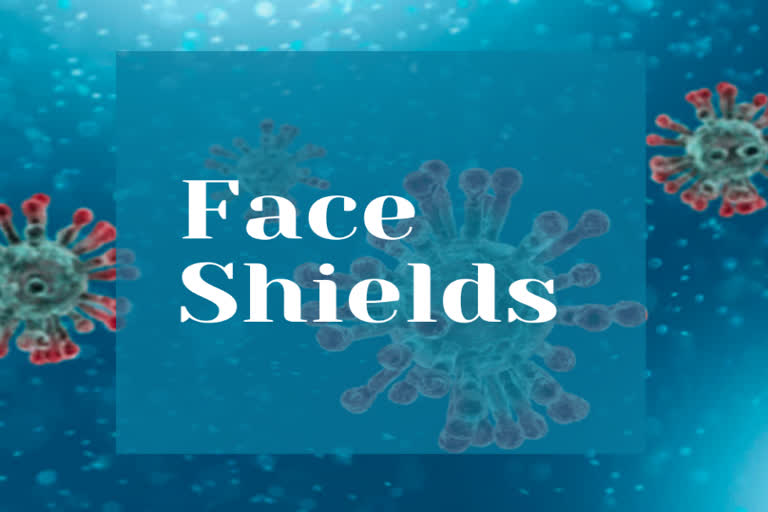When the coronavirus pandemic hit Mumbai and medical workers appeared clueless how to treat patients by ensuring their own safety, an enterprising female medical practitioner found a solution by designing a face shield made out of overhead projector sheets.
The medical practitioner, working as an infection control expert at a suburban hospital, said a face shield
should be made of plastic to stop fluid from entering inside.
"Hence, I decided to use A4 transparency sheets of overhead projectors and made face shields. They are washable and can be reused. I gave these face fields to hospital staff till PPE (Personal Protective Equipment) supplies came," she told.
After testing the in-house produced shields for factors like comfort and clarity among others, the prototype
was approved and 1,000 units were made, she said.
The shields have helped address the shortage of safety equipment for medical workers who are at the forefront of
fighting the battle against coronavirus.
"Once a person wears the personal protective equipment (PPE), he feels safe. But they don't realise that
you have to handle the PPE properly or else it will become a potential source of infection," she said.
Also Read: MEA playing key role in procuring crucial medical equipment to fight COVID-19: Official
It was difficult to explain to health workers about the product initially when the hospital started admitting
suspected COVID-19 patients in its isolation ward, she said.
Health workers were in a panic mode since there were no guidelines on treating such patients, said the medical
professional.
"Hospitals never felt the need to stock PPEs till the coronavirus came knocking at our doors," she said.
"Protecting eyes, mouth and nose is very important as they facilitate entry of the virus into the body," he said "There is a sequence/procedure to use or remove thePPE. You have to ensure you don't contaminate or infect
yourself," said the doctor, who is in-charge of handling infection control protocols at the hospital.
She was given the task of putting safety protocol in place for judicious use of PPEs by medical workers and
managing supply and to prevent their overuse or misuse.
"The biggest challenge was to find a solution to shortage of PPEs. Due to rising fear among medical workers,
PPE kits were used extensively, leading to their shortage,"she said.
Also Read: Now make Google Assistant more sensitive at home
She has now trained over 300 workers in infection prevention and control, disposal of biomedical waste and
appropriate use of PPE.
"PPE is required when if you are doing any procedure on a patient within one meter distance. When you are spending 15 minutes with the patient within one meter. "PPE is compulsory for procedures like suction,
intubation, extubation, nebulization,throat or nasal swab collection, ENT or ophthalmic examination, dental procedure," she said.
"While checking pulse or putting IV line gloves and face shields are enough. The Union ministry of health and
family welfare has provided guidelines for rational use of PPEs for all such things," she said.
"Ours is not a COVID-19 hospital. We have an isolation ward. Many health workers are not reporting for work but
those who are, are facing different challenges," she said.
"The government is providing support to health workers but you need to listen to them more.Till swab report
of a patient comes, there is apprehension whether we will be quarantined.
"Some hospitals are allowing them to work for 14 days and then rest for 14 days. Each hospital takes its own
decision," she said.
She said drawing up safety protocols is a challenging task as she has to take into account standards laid down by
the WHO and the central government.
Also Read: Fortnite finally lands in Google Play Store



